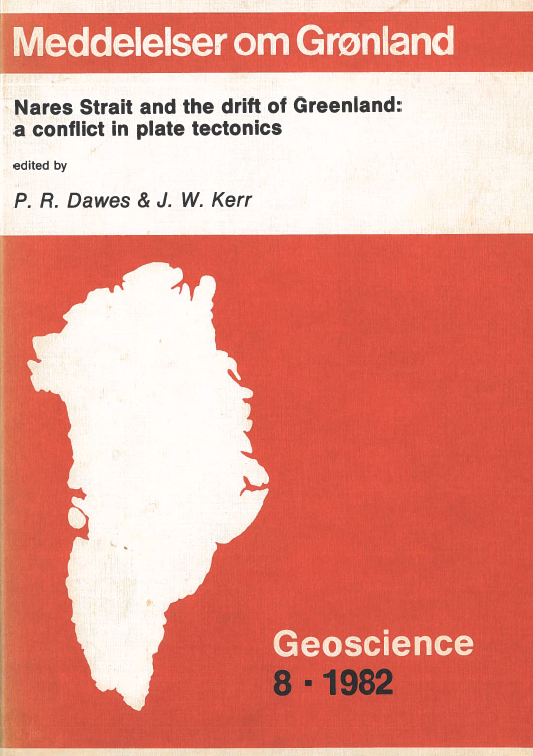The evolution of the Nares Strait lineament and its relation to the Eurekan orogeny
DOI:
https://doi.org/10.7146/moggeosci.v8i.141064Abstract
If one accepts that the Labrador Sea was closed in Early Cretaceous time, then this assumption creates extra space northwest of Greenland. Where Ellesmere Island lay within it relative to Greenland and also to North America becomes a major problem in geological interpretation. Whatever solution is chosen creates conflicts with the current interpretations of the geology of the eastern Sverdrup Basin and/or the geology of Nares Strait.
The main elements of the tectonic model presented herein are: 1) Early to Middle Cretaceous: incipient rifting in the Labrador Sea terminated in an RRR triple junction north of Bylot Island and established the Nares Strait and Lancaster Sound lineaments; 2) Late Cretaceous to Early Paleocene: Greenland and Ellesmere Island rotated together counter-clockwise relative to North America, causing crustal shortening in the Sverdrup Basin (the first phase of the Eurekan orogeny); 3) Late Paleocene to Early Oligocene: responding to a new pole of rotation, Greenland moved left-laterally relative to Ellesmere Island along the Wegener Transform Fault; 4) Middle Oligocene: Greenland and Ellesmere Island moved northwestwards some 40-50 km (the main phase of the Eurekan orogeny); 5) Middle Oligocene to Present: compressive stresses relaxed followed by rapid subsidence of all basins.
This model requires that the Early Cretaceous Sverdrup Basin was much wider than today. An analogy is drawn with the thin-skinned tectonic model for the southern Appalachians as a possible mechanism to reconcile this requirement with the known geology. As major lateral Tertiary motion on the Wegener Fault is at oddswith the geological interpretations across Nares Strait, this model suggests that either an alternative geological interpretation of Nares Strait (perhaps in the context of a fault zone) be found, alternative locations to accommodate the motion be found, or else the currently accepted tectonic history of the North Atlantic is seriously in error.
Downloads
Published
How to Cite
Issue
Section
License
Coypyright by the authors and the Commision for Scientific Research in Greenland / Danish Polar Center. No parts of the publications may be reproduced in any form without the written permission by the copyright owners.


